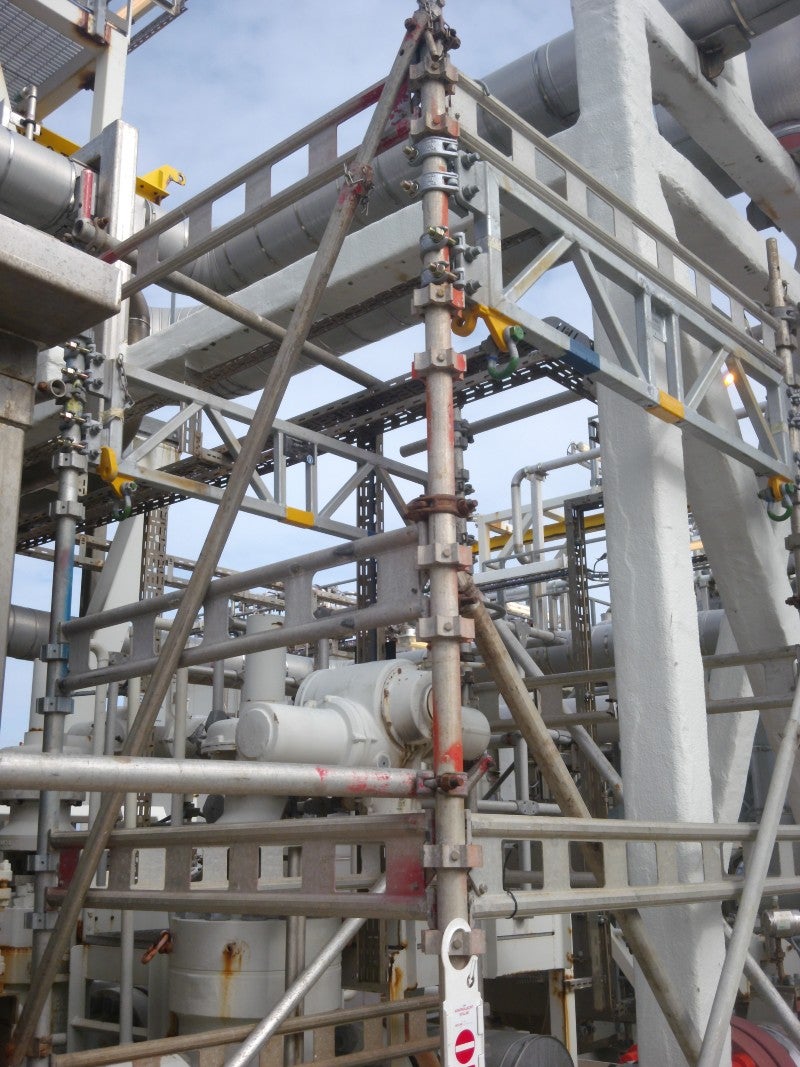
Effective lifting equipment is key to preventing accidents and ensuring stable operations on oil rigs. World Expro finds out about Westech’s ENERGY Rig and how its lifting tool is saving operators valuable time and money while allowing greater flexibility for heavier loads.
Operating conditions in the oil and gas industry are notoriously harsh. Lifting and hoisting can be dangerous and it is crucial to have the correct equipment in place to ensure stringent safety requirements are met and the workforce is protected. At a time when operators are under increasing pressure to make cost savings, this is no easy task. Smaller rig arrangements often consist of scaffolding materials with lifting points placed on the ledge beam. And, in some cases, this may be limited according to the working load limit. A weight calculation for lift operations must carefully consider the dynamic capacity of the scaffolding. However, there are significant risks that come with using the scaffolding, as lifting rigs and challenges arise when capacity is overloaded. For heavier lifts, more complex scaffolding must be applied, which requires extra planning and engineering. Existing scaffolding components used during lifting increases the risk of faulty assembly, as the lifting points may not be the same as those built and documented. The result: undocumented lifting points that are used without knowing whether they can hold the specified load.
Safety first
This is a problem that Westech is only too familiar with. Established in 1985
in Stavanger, Norway, the company has a wealth of experience in delivering
innovative products for the oil and gas industry, from industrial scaffolding to
flame-retardant tarpaulin. Inundated with enquiries about lifting equipment, it decided to develop a solution that put safety first while allowing for a larger maximum load. The ENERGY Rig is a lifting tool that is compatible with most existing scaffolding equipment and is designed to make the lifting process more efficient and cost-effective. Damage to equipment and injury risks to employees are, therefore, dramatically reduced. While existing scaffolding solutions require the location of the lifting part to be documented, which can involve hours of work, the ENERGY Rig comes with fully certified documentation for up 4t, saving considerable time.
The user manuals provide clear instructions on how to lift securely with
the ENERGY Rig, without the need for cranes, which can be costly and time-consuming. Advanced calculations and constructions are no longer necessary,
and heavier lifting assignments can be carried out at short notice, as the tool
can be easily assembled by authorised scaffolding personnel and it only takes
ten minutes to install on the finished frame. The rig can also be used without
scaffolding and instead be secured to other permanent structures, as long as the basic formulas in the manual are followed, giving the user added flexibility. A single ENERGY Rig can be assembled between two towers, or alternatively, they can be assembled in pairs for higher loads. Once the lifting is complete, the tool is quick to dismantle. After an initial mobilisation cost, it can be rented for a fixed time period at monthly intervals.
The ENERGY Rig has quickly become a trusted solution for key players across
the offshore and onshore Norwegian energy sector. Looking forward, Westech
is excited to launch its lifting tool to the international market. The company is also currently working on new versions of the ENERGY Rig for lifts under 1.2t, which come with several extra features. The top priority is, as always, to continue making lifting operations easier and faster while minimising risks.

